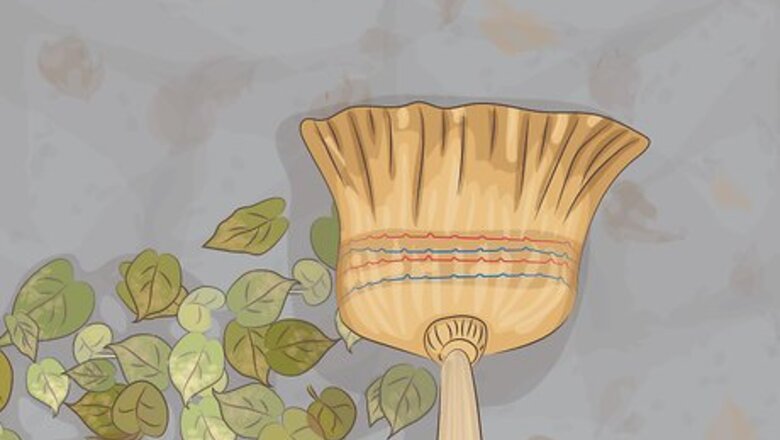
views
X
Research source
Removing these stains is easy with a little effort and the right tools.
Preparing the Area
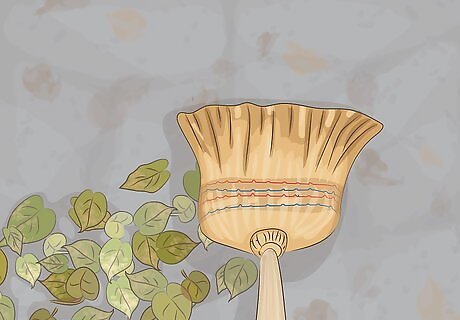
Sweep the concrete area with a broom. Remove any leaves and debris from the surface. Leaves that have settled on the surface for longer are more likely to stain the concrete. Although the leaf stains may be concentrated in a small area, it's best to clean the entire slab. Otherwise it can look patchy if you only clean the stained areas.
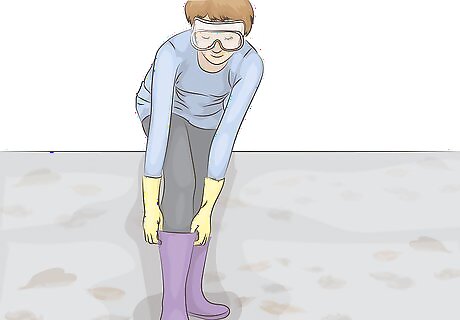
Put on protective clothing. Depending on what agent you use to clean the stains, you may need to wear gloves or safety glasses. Wear closed footwear to prevent exposed skin coming into contact with the chemicals.
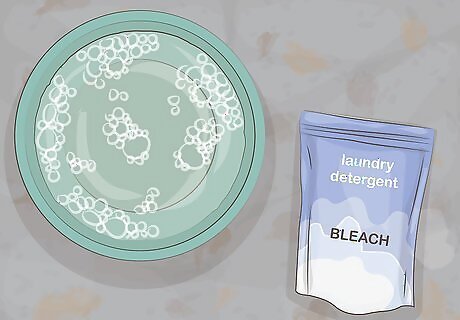
Make the cleaning agent in a bucket. Most products will require you to dilute them with a few gallons or litres of water. You can use a regular laundry detergent with bleaching properties (e.g. Oxiclean) or a special organic stain remover. Granular detergents are also great as they provide added friction when scrubbing. Darker, tougher stains may not be removed with detergent. You can also prepare the cleaning agent in a watering can. This can help with applying it during the cleaning process.
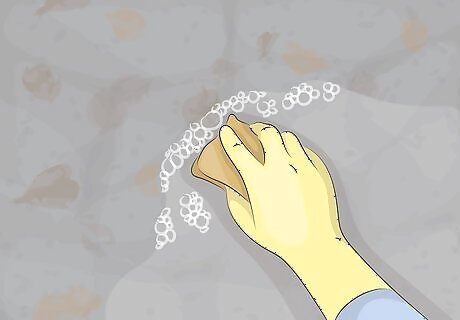
Spot test the cleaning solution first with a sponge. Choose a stained area that is hidden from view. If you have coloured concrete, some chemicals may cause the colour to change or fade.
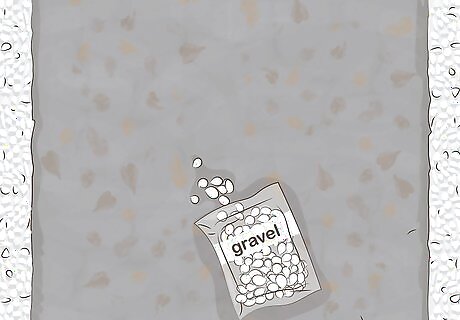
Place gravel or sandbags to collect runoff if required. Put them around the perimeter or dig a shallow trench if appropriate. Consult with local authorities about runoff disposal. Some chemical contaminants are not permitted to enter storm drains.
Cleaning the Stains
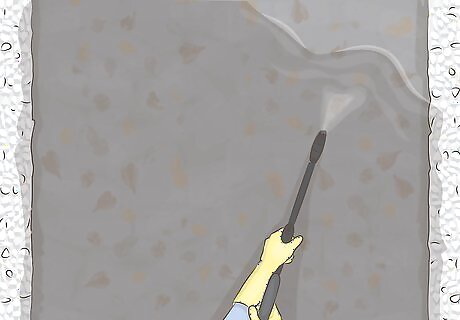
Wet the stained concrete with plain water. Use a garden hose or a pressure washer. This will help remove any remaining debris from the surface. Damp concrete will allow the cleaning agent to permeate better. For deep-cleaning concrete, a pressure washer that can reach 3,000 psi (pounds per square inch) is recommended. If using a pressure washer, begin with a low pressure setting first so there’s no recoil when the machine is started.
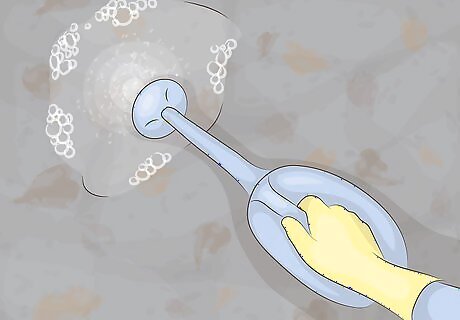
Apply the cleaning solution. A watering can allows you to pour it. Leave the detergent or organic stain remover to seep into the stained concrete for a few minutes. It will be more effective if you give it time to soak in. Some detergents can be dispersed using a pressure washer. This is dependent on both the detergent and the pressure washer that you use. Keep the areas wet, don't let the detergent or stain remover dry on the surface.
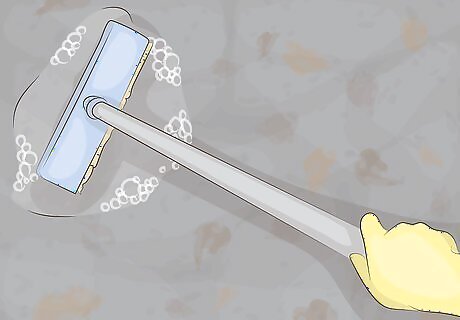
Scrub the stain with a stiff brush. Apply some force while scrubbing. Use circular motions rather than side-to-side/up and down. Don’t use a wire brush as this may scratch your concrete surface.
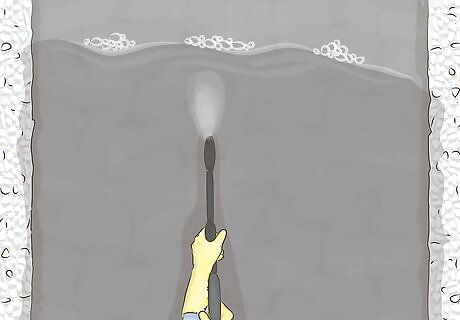
Rinse the concrete surface. Once it is clean, wash all the detergent or organic stain remover from the concrete. Dispose of the contaminated water safely. Leave the concrete to dry. You may have to repeat the process if the stains have not been removed completely. Organic stains are carbon-based, making them the toughest to remove.
Maintaining the Concrete
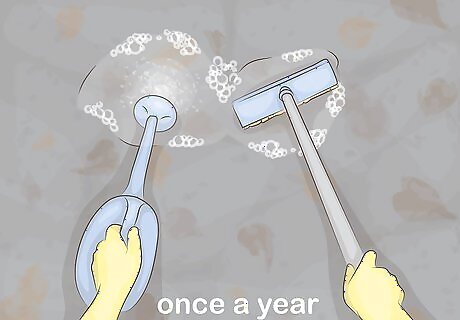
Clean the concrete every so often. Aim to do it once a year. This will help to extend the lifespan of the concrete and keep its colour bright. It will also stop stains and grime from building up.
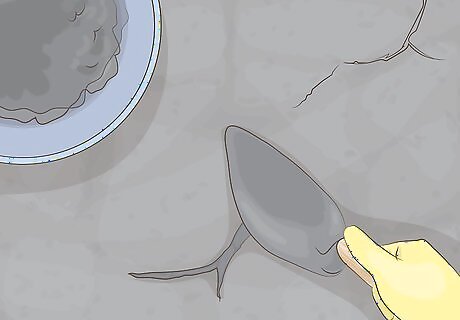
Fill cracks in the concrete. Use mortar or a concrete filler. Repairing cracks reduces water seeping into the concrete and degrading it.
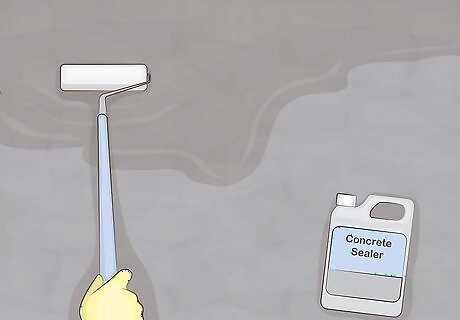
Use a sealant to seal the surface. A thin coat of sealant is usually applied with a roller or sprayer. It can prevent the concrete from staining and provide resistance against UV sunlight and abrasions from foot traffic. The concrete must be clean and completely dry before you apply a sealant. Always follow the manufacturer’s guidelines for the product you are using. Look for sealants that are “breathable”. This allows water to escape without getting trapped in the concrete.




















Comments
0 comment